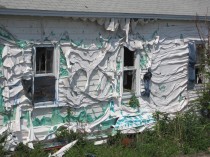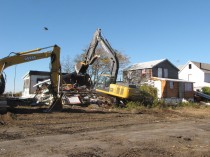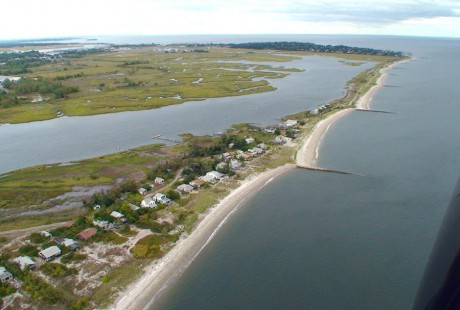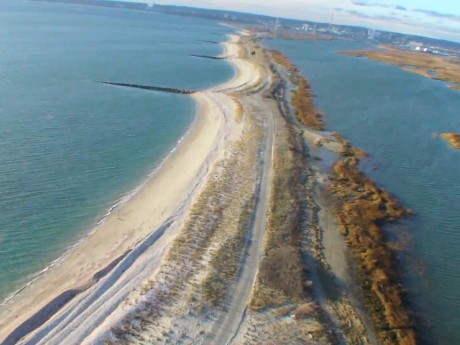Long Beach West Dune and Beach
In April 2011, a project was completed to restore 35 acres of beach and dune habitat in place of the hazardous debris that had contaminated Long Beach West for over a decade. This project was implemented by Southern New England—New York Bight Coastal Program (SNEP), part of US Fish and Wildlife Service’s Coastal Program, with funding and support from the American Recovery and Reinvestment Act and Long Island Sound Futures Fund among others. Not only is the site now a fruitful nesting site for federal- and state-listed bird species, but this project also prevented an environmental catastrophe—just months after completion, in August 2011, the impact of Tropical Storm Irene would have cast the contaminants throughout the surrounding watershed and caused devastation were it not for their clearing.
Long Beach West is a stretch of beach and dune habitat that once hosted a small and lively summer community. In addition to various facilities, 37 cottage homes and 27 outbuildings were situated on the beachfront. When a fire on Father’s Day in 1996 burned down the only bridge connecting Long Beach West to shore, it was rendered inaccessible and left to deteriorate into an ominous “ghost town.” Hazardous wastes, outdated septic systems, and scattered debris left the area overrun with contaminants and unsafe for either wildlife or human use.
In 2009, SNEP undertook a project to address this issue. It initiated a hazardous waste inventory and planned the removal and demolition of the contaminants, as well as for the habitat restoration to follow. The American Recovery and Reinvestment Act of 2009 (ARRA) contributed a substantial $909,000 to the venture, with additional contributions from the Long Island Sound Futures Fund and other organizations. A host of partners collaborated with SNEP to bring this project to fruition.
After several environmental assessments, the clearing process began in early 2010. The first step was to remove the hazardous debris, such as asbestos, prior to the demolition work. A temporary road was constructed to transport larger items off-site over land, the method determined to have the most minimal environmental impact. Then all work was suspended for six months (March 15– Sept. 15) to respect the nesting grounds of piping plovers and other shorebirds.
On Sept. 27, 2010, many representatives gathered to kick off the demolition project including U.S. Representative Rosa DeLauro, Stratford Mayor John A. Harkins, and officials from US Fish and Wildlife. Demolition work was completed in April 2011 and habitat was fully restored in the weeks following.
Now, not only is Long Beach West supporting various species of endangered wildlife, it is even open for passive recreation for the first time in over a decade. It is recognized by the National Audubon Society as an Important Bird Area, valuable both as a resting site and migratory stopover point for rare bird species such as least tern, black duck, clapper rail, and piping plover. It also supports five species of Connecticut-listed rare plants and nesting diamondback terrapins.
Almost immediately after restoration was completed, birds began to establish nests on the site. Even American oystercatchers created nests there, a species that had never nested on the beach before. Most impressively, the project is responsible for preventing an environmental catastrophe: had the cottages not been removed before August 2011, Tropical Storm Irene would have swept the debris into the Sound and caused extensive contamination. Through the combined efforts of local, state and federal participants this habitat was restored to a healthy barrier beach, enjoyed today by wildlife and people alike. A resounding success!
Learn More:
- Visit the Department of the Interior’s web page on the Barrier Beach Restoration on Long Beach West for more details, including links and several videos of the demolition project.
- This fact sheet by US Fish and Wildlife Service describes the value of Long Beach West’s ecology and of this restoration, with aerial photos and a project timeline.
- This article on the US Fish and Wildlife Service describes the value of the restoration to bird life.
- Photos of the project are also available on the US Fish & Wildlife Service’s flickr page.



